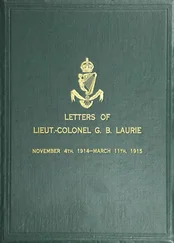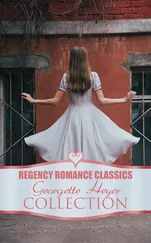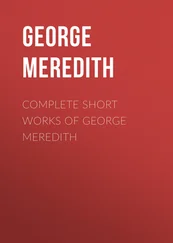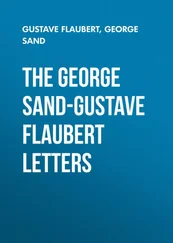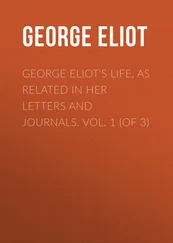He was not good-looking, although he had a neat figure, of middle height, and nice hands: but his eyes were dead, his complexion muddy, and his features pinched, although not especially Jewish. On the other hand, he was extremely well-spoken, and there was nothing about him in bad taste.
The ambivalence is reflected in Santayana’s overall judgment on his relationship with Loeser: «To me he was always an agreeable companion, and if our friendship never became intimate, this was due rather to a certain defensive reserve in him than to any withdrawal on my part.» 14Loeser’s «defensive reserve» and the asymmetry it introduced in their relation, is a constant theme in the pages devoted to him in Persons and Places . When he lived in Florence as a rich bachelor, notes Santayana, Loeser seemed also to be oddly friendless, in spite of knowing the whole Anglo-American colony; and Santayana complains that, in the 1920s, when he regularly stayed at Charles Strong’s Villa Le Balze in Fiesole, next to Florence, Loeser, who had a car, never visited him or invited him to his house: «this made me doubt whether Loeser had any affection for me, such as I had for him, and whether it was faute de mieux , as a last resort in too much solitude, that in earlier years he had been so friendly». 15But this melancholic doubt is quickly dismissed by the ever-realist Santayana: «circumstances change, one changes as much as other people, and it would be unreasonable to act or feel in the same way when the circumstances are different.» 16All in all, Santayana’s gratitude to Loeser for having shown him Italy and for his guidance in the visual arts, is unqualified.
After their college years, in the 1890s, Santayana and Loeser met several times in London. Santayana reports that his friend had become «very English, much to [his] taste» 17and that he was both vastly instructed and amused by Loeser’s «expert knowledge of how an English gentleman should dress, eat, talk, and travel.» Yet those meetings didn’t relieve Santayana of «the latent uneasiness [he] felt about [his] friend»: he actually suspected «a touch of madness in [Loeser’s] nature,» 18to such an extent that he wondered whether, when Loeser boasted of having two original works by Michelangelo in his collection, he was not indulging in wishful thinking. But no, the Michelangelos were authentic, and Loeser had got them cheap. He was a truly terrific collector.
It was in 1895, and with Loeser, that Santayana first visited Rome and Venice. Loeser turned out to be quite the ideal cicerone : «His taste was selective. He dwelt on a few things, with much knowledge, and did not confuse or fatigue the mind.» 19The first impressions upon arriving in Rome may have played a role in Santayana’s ultimate choice of residence:
We reached Rome rather late at night. It had been raining, and the wet streets and puddles reflected the lights fantastically. Loeser had a hobby that architecture is best seen and admired at night. He proposed that we should walk to our hotel. […]. We walked by the Quattro Fontane and the Piazza di Spagna – a long walk. 20
In the autobiography, Santayana does not tell us in what year he and Loeser undertook a walking tour of the Apennines, from Urbino to San Sepolcro; but one of the newly found letters (June 8th, 1897) allows us to date the trip. As promised, I will not dwell on Santayana’s stereotyping reflections that accompany his account of this excursion (they concern «the modern Jew» and his purported inability to «apprehend pure spirit» 21), and I will limit myself to quoting the memorable exchange the two friends had when they reached the top of the pass:
… after deliciously drinking, like beats on all fours, at a brook that ran down by the road, we looked about at the surrounding hill-tops. They were little above our own level, but numerous, and suggested the top of the world. «What are you thinking of?» Loeser asked. I said: «Geography». «I», he retorted, «was thinking of God.
Loeser died in New York, during a visit in 1928, and was buried in the Cimitero degli Allori in Florence, which welcomed the graves of non-Catholics. By then, his collection comprised over 1’000 pieces, mostly works of Italian Medieval and Renaissance art, but also contemporary works, most notably an impressive collection of fifteen Cézanne paintings. Loeser bequeathed his collection of Old Master prints and drawings to Harvard University’s Fogg Museum of art, eight of his Cézannes to the President of the United States, and a selection of thirty works of art and furnishings to the Florence city council, which are housed in the Quartiere del Mezzanino of Palazzo Vecchio (where one can admire Bronzino’s superb portrait of the poetess Laura Battiferri). The Cézannes were initially shown at the National Gallery of Art in Washington, until the Kennedys took notice of the gift and decided to hang a few of them in the White house. In a letter dated May 2 1961, the First Lady wrote the following to Loeser’s granddaughter, Mrs. Philippa Calnan:
Dear Mrs. Calnan:
I hope you will be as pleased as the President and I are that we have arranged to have the superb Cezanne paintings which you and your father so generously presented to the United States Government hung in the Green Room of the White House. We have selected «The Forest» and «House on the Marne» to be brought here first. We plan to exchange the paintings so that eventually all of them will hang for some time at the White House. The ones not at the White House at any particular time will be in the safekeeping of the National Gallery of Art and on exhibition to the public there. All eight paintings will, of course, while at the National Gallery and while here continue to bear the label «Presented to the United States in memory of Charles A. Loeser».
This arrangement is particularly gratifying to me because I have often admired your father’s paintings at the National Gallery of Art. Please let me know if you come to Washington. I would be delighted to show the paintings to you in their places here at the White House.
With best wishes.
Sincerely yours,
Jacqueline Kennedy
Indeed, Philippa Calnan responded to the First Lady’s invitation and visited the White House at the end of June 1961. Photographs taken during that visit can be seen at the John F. Kennedy Presidential Library and Museum website. 22Today, three of the Cézannes hang in the National Gallery and five in the White House family quarters, but the eight paintings have never been installed together as an ensemble, as the Loeser bequest directed.
Despite these various donations, a substantial part of Loeser’s collection remained in the estate of the family. At some point between the promulgation of Mussolini’s anti-Jewish racial laws (1938) and the German occupation of Italy (1943) Loeser’s widow, the German pianist Olga Lebert Kauffman, their daughter, son-in-law and granddaughter left Florence, leaving behind valuable works of art, and ultimately settling in the United States. Several works from the Loeser collection were on the authoritative list of Nazi-plundered art compiled by the art historian Rodolfo Silviero (aka «the 007 of plundered art»), and at least two have been returned to the family. The Middle and High Schools of the International School of Florence are housed since 2003 in Loeser’s Villa Torri La Gattaia, situated on a hill overlooking Florence.
***
The long early letters (1886-1888) of Santayana to Loeser contain extensive and captivating philosophical passages, while the later (and shorter) ones concern mainly the logistics of the meetings of the two friends in Europe. The last dated letter of the collection (October 26th, 1912) is a beautiful letter of congratulations on the occasion of Loeser’s late marriage to Olga Lebert Kaufmann.
Читать дальше

